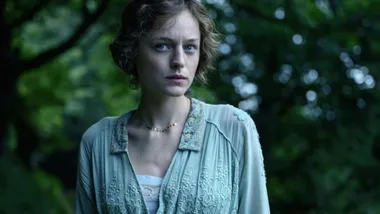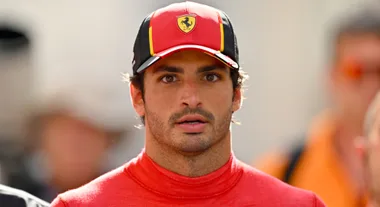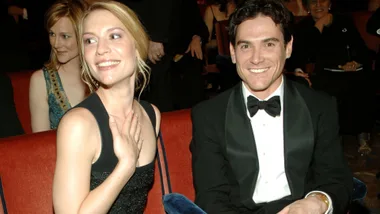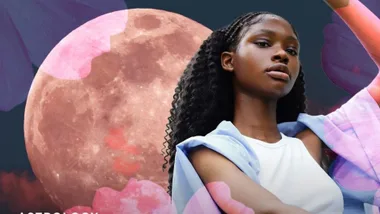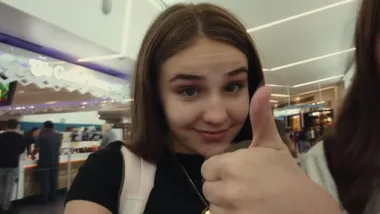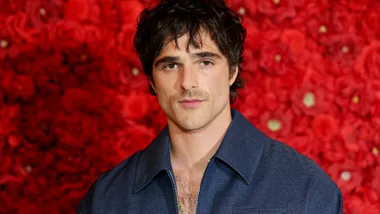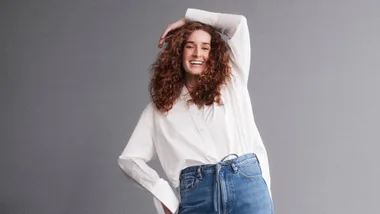Tucked away on a sleepy street in Seattle stands an unassuming weatherboard known as the happiest house on Earth. At the entrance, a gold Mickey Mouse door knocker guides guests into a series of themed rooms: a Ratatouille-style kitchen, a Lilo & Stitch living room, a Little Mermaid ensuite and a newly renovated Encanto guest room, remodelled in honour of last year’s film release.
No, this isn’t a quirky Airbnb experience or even a room at one of Disney’s resorts, but the home of Kelsey Hermanson, 36, a self-confessed Disney adult, her husband, Eric, and their two children.
“It’s my little happy place,” Hermanson tells me via Zoom, from her Cinderella-themed master bedroom. “When the world is just going crazy, I come in here and I’m in a fairytale.”
According to the internet, Disney adults are defined as millennial grown-ups, often without children, whose passion for Disney extends far beyond the park walls.
From “Disneybounding” (a low-key form of cosplay where instead of a costume, colour blocking and accessories are used to emulate a character) to Disney weddings, the motivation for these “House of Mouse” fans is to bring the magic of Disney into their everyday lives.
A seemingly harmless fandom, yes, but for many community members the “Disney adult” label comes with a stigma. On TikTok, the hashtag #disneyadultsarepeopletoo has been used 2 million times, in a bid to reclaim the narrative.
“Disney adults get a bad rep of being weird or creepy or needing to grow up, but what people don’t understand is that we’re just like everyone else. We just have a passion,” explains Rozy Ambler, 31, a Florida-based content creator known as @rozysmagicalworld, who creates Disney-inspired videos for her 1.2 million TikTok followers.
“I was made fun of for being an older person who loves Disney. My family would say, ‘You’re an adult, that’s for kids,’ so I was shy about sharing my love for Disney.”
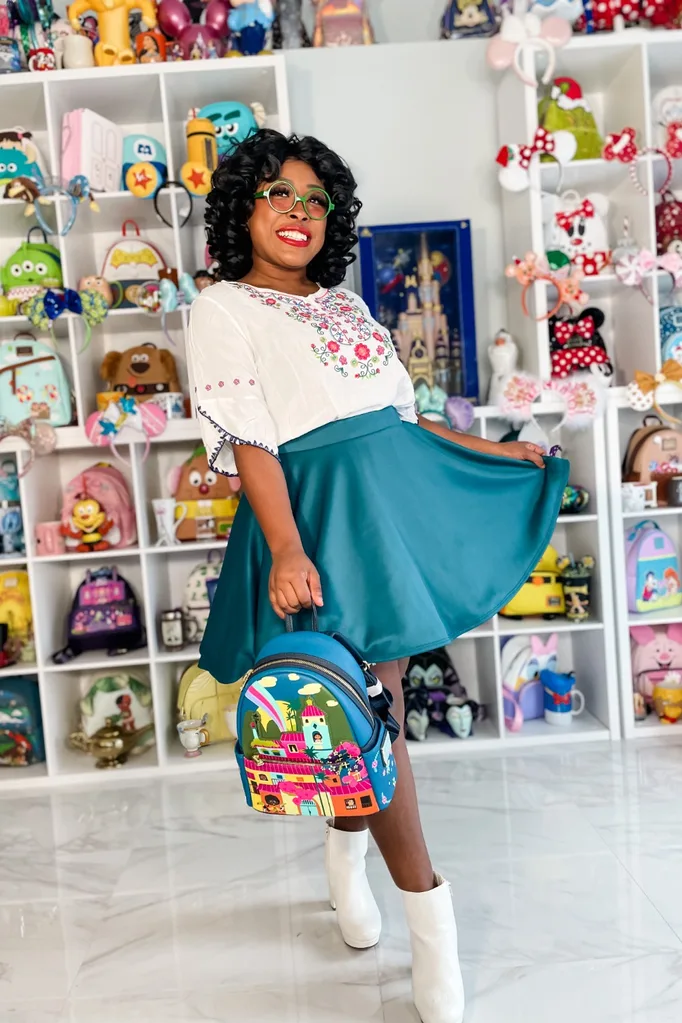
In 1955, on a 65-hectare orange-orchard grove in Anaheim, California, a metropolis of fantasy and nostalgia was born. Imagined by famed animation producer Walt Disney, the concept was to create a theme park for adults and children, a place where the worries of the outside world would be left at the front gates.
Today, the Walt Disney Company is one of the largest media conglomerates in the world, bringing in a global revenue of more than $US67 billion last year. Of this revenue generated, $US50.87 billion is from media and entertainment and more than $US16.55 billion is from the parks and resorts.
Walk through any of the 12 global parks, and it’s difficult not to get swept up in the Disney effect. From the sea of Mickey Mouse ears to the parade of Loungefly character backpacks and themed food, the movie-inspired paraphernalia is as popular as the parks themselves.
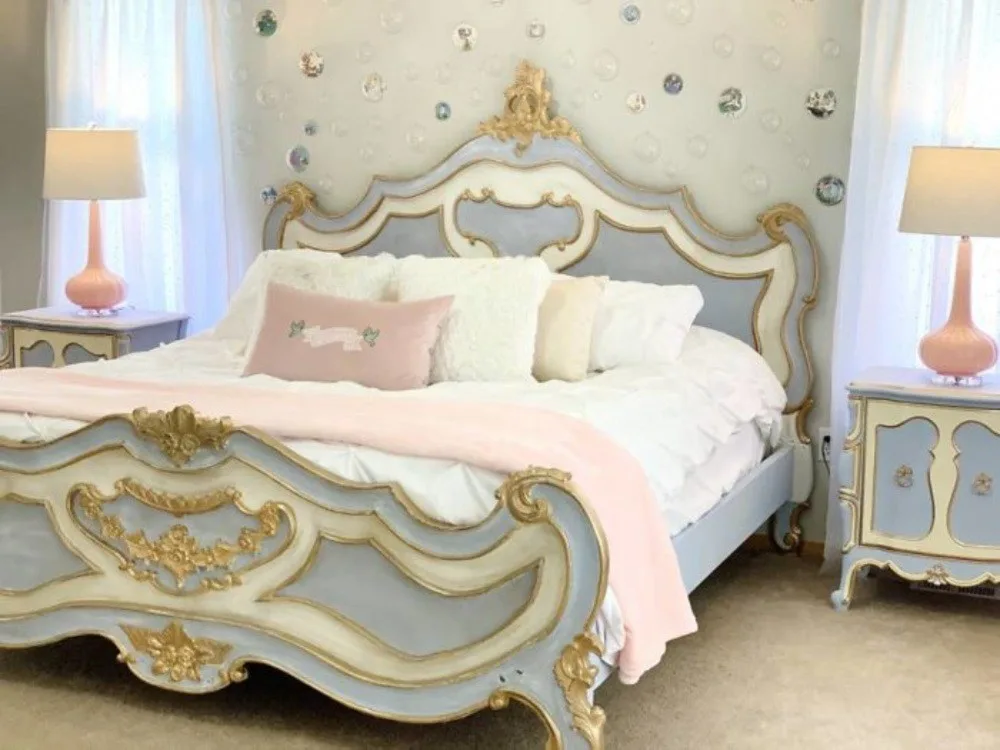
Midway through marie claire’s conversation with Ambler she takes the opportunity to give us a virtual tour of her own prized collection. Showcased across three walls stands a 3-metre-high Disney shrine.
“I probably have about 500 mugs. I collect everything from ears to bags, mugs to popcorn buckets. Since we moved closer to the park, the collection just keeps growing,” says Ambler, who recently sold her house in Seattle, Washington, to be closer to Disney World in Orlando, Florida.
“The other day I counted 96 Loungefly bags and they go anywhere from $50 to $80, and then adding in the mugs and the ears, I reckon I’ve spent about $30,000.”
California-based Disney adult Ashley Park, 29, has also invested a considerable sum into the Disney franchise, attending the parks once a fortnight (annual passes start from $US1300 for a basic package) as well as hosting her wedding at the park in December last year (wedding packages range up to $US70,000).
“I always wanted to get married at Disneyland. I remember when I was in college, I don’t think I even had a boyfriend at the time, and I had sent an enquiry to the Disney wedding team to get a quote,” recalls Park, who tied the knot in true fairytale fashion complete with hidden Mickey jewels in her floral bouquet.
“We had our wedding inside the animation pavilion, with Disney movies playing all over the room. After the ceremony, we walked through the castle with our guests, and then went on the Peter Pan ride. It was magical.”
As for Park’s husband, surprisingly the wedding location wasn’t a big issue.
“My husband always liked Disney, but definitely not as much as me. During our wedding vows, he said, ‘I knew that this was going to be forever when I signed up for an annual Disney pass,” Park tells me over Zoom.
Park and her husband put those passes to good use: our Zoom interview takes place on a Tuesday and Park dials in from a table on Main Street Disneyland, the futuristic rides of Tomorrowland looming behind her.

Like many fandoms, a big drawcard for Disney adults is the sense of community and judgement-free space it fosters.
“In the parks I feel accepted and proud to be who I am. If I decide to put glitter on my face or dress up outside of the park, people will often stare at me or say I’m weird, but at the parks you’re celebrated for being creative and different,” says Park.
“Disney really caters to all genres of people, whether you’re a parent or a kid, or an adult with no kids and just coming by yourself. It’s a place where everyone’s accepted.”
For Ambler, the animated films offer a source of comfort. When times were chaotic during her childhood, Disney classics became her escape.
“My parents separated when I was really young, so my childhood was a little different,” she explains.
“Disney was my happy place, where I could go and immerse myself in the movies and the music if I was feeling sad or confused. Now, as an adult, I’m basically doing the same thing, bringing that feeling of happiness and nostalgia into my life.”
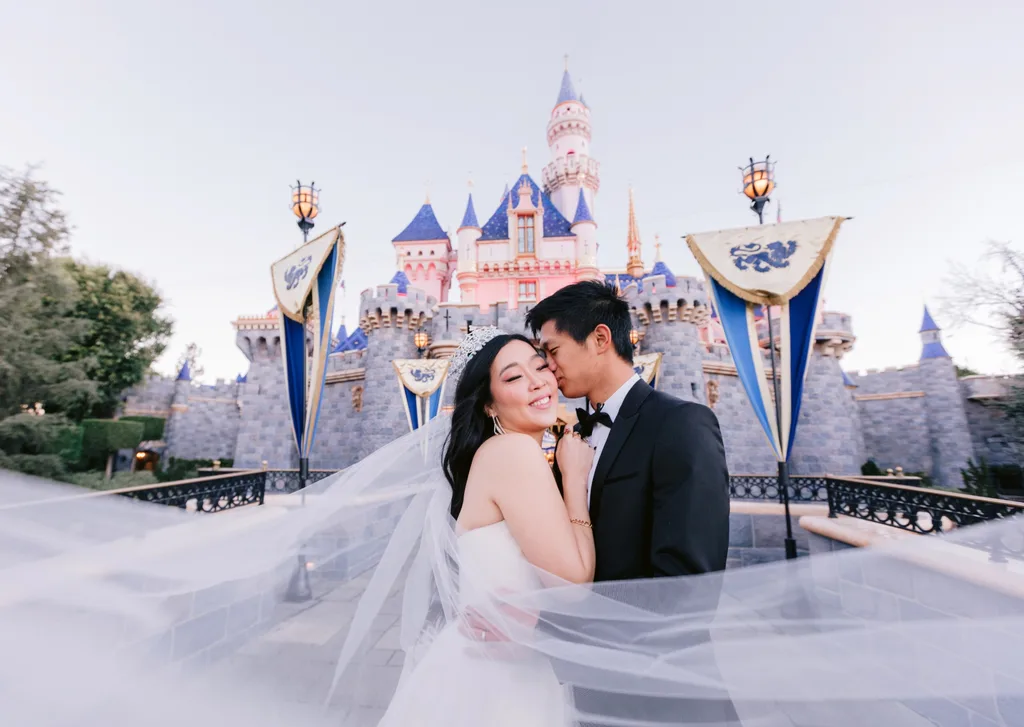
One thing you should know about Disney adults is that they enjoy hiding in plain sight. However, there are a few clues (or hidden Mickeys) that give them away.
“I’ll add subtle nods to Disney through my wardrobe, such as Mickey earrings or phone cases or an accessory from the Kate Spade Disney collaboration,” says Hermanson. “If there’s a Disney option for something, I’ll buy it.”
Park rules prohibit guests over the age of 14 from wearing costumes at Disneyland, although a loophole is to re-create character costumes using ordinary clothes, a practice known as “Disneybounding”.
Think of red polka-dot dresses for Minnie Mouse or a yellow skirt, blue tank top and a red cardigan for Snow White.
“When planning what I’m going to wear to the park, I think about the characters [park employees] I’m going to see. I love the one-on-one interactions with the characters. When they see my outfit, that’s the cherry on top, it gives me a boost of serotonin. You feel accomplished because you put a lot of work into researching and putting it all together,” says Ambler, who is working on a styling business for Disneybounders to help them plan their park outfits.
With more than 60 animated films and 800 characters to choose from, the opportunities for self-expression among bounders are endless. “My husband definitely doesn’t Disneybound by choice,” adds Park.
“When we first started dating, I wanted to bound as my favourite character, Vanellope from Wreck-It Ralph. So I dressed up as [her] and got my husband to dress up as Wreck-It Ralph. I’ve also bounded with my family as Peter Pan.”

If you’re looking for inspiration, you will find a meticulous edit of animation-inspired outfits ideas on Pinterest, with creators competitively trying to curate the best look. “One of the things I struggle with is what I’m going to wear to the parks,” says Ambler.
“Something I’m working on at the moment is telling myself that it’s OK to go to the park in just a T-shirt and bike shorts, and not worry about content or photos. It’s hard, because every time I Disneybound I’m trying to make it better than the last.”
In the past century, diversity and representation is something that has too often been left out of the script. And while the past six years have seen a slew of diverse new stories and characters joining the Disney portfolio, including Moana (2016), Coco (2017), Mulan (2020) and Encanto (2021), there’s still a lot of work to be done. For Ambler, a history devoid of Black storylines has had lasting repercussions. “I often think about how different it would have been if The Princess and the Frog [2009] had come out when I was a kid,” she says.
“Something I’ve struggled withis being a Black Disney creator in a space that is primarily white creators. [But] there are a lot of Black Disney creators, they’re just not always seen. When I Disneybound as a white character, I get comments saying, ‘Ariel’s not Black’ or ‘Cinderella is not Black’, or ‘How come you’re not doing Tiana?’ It would be nice to have more diversity in characters, because I don’t always want to be Princess Tiana.”
Sitting in front of her handcrafted princess vanity, Hermanson agrees that a lot has changed for Disney adults since she first started to share her castle with the world.
“I’ve seen the community come around in full swing,” says Hermanson, who’s been creating Disney-inspired decor for the past five years. “Some people still leave nasty messages, but I think it’s OK because the amount of joy we bring outweighs the number of people we make uncomfortable.”
And while she knows you can’t stop the negative comments, the unapologetic Disney adult takes comfort in knowing that, just like her beloved fables, even princesses have enemies. It’s a sentiment echoed by Ambler. “I’m a proud Disney adult,” she says. “I love it, and I’m not going to let anyone take that away from me.”


